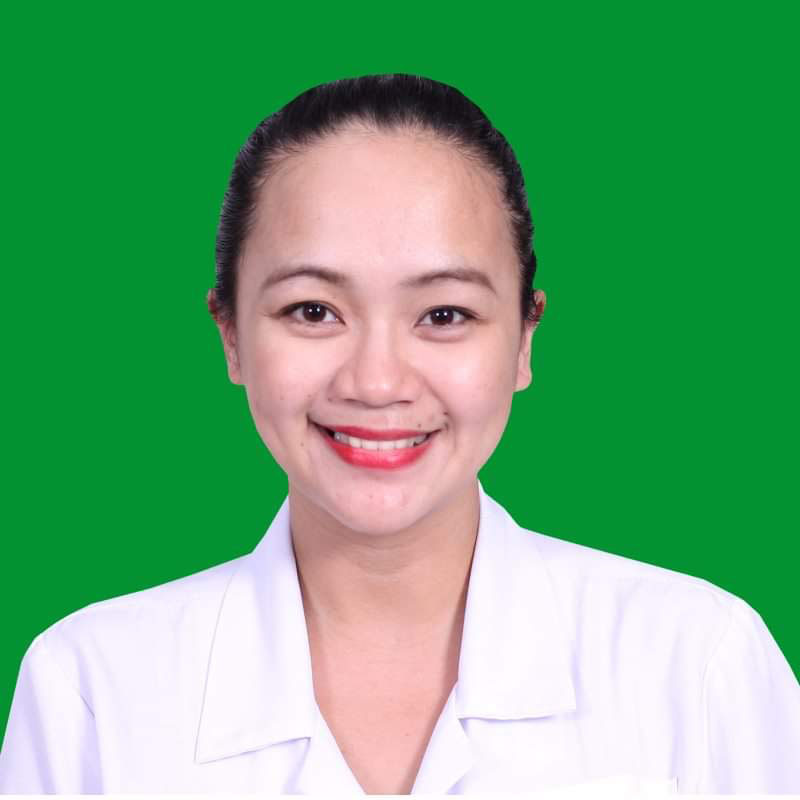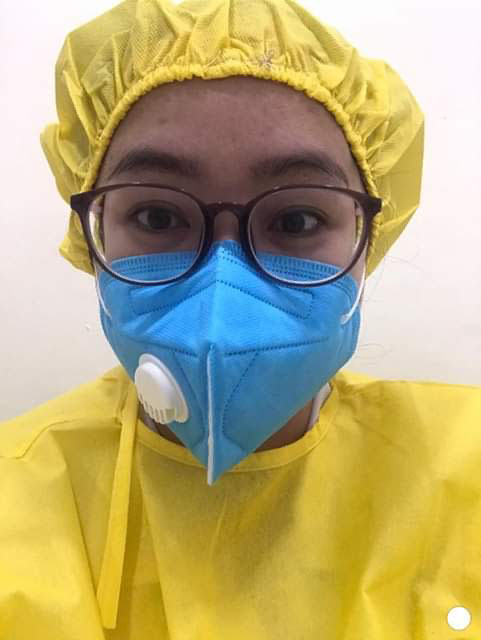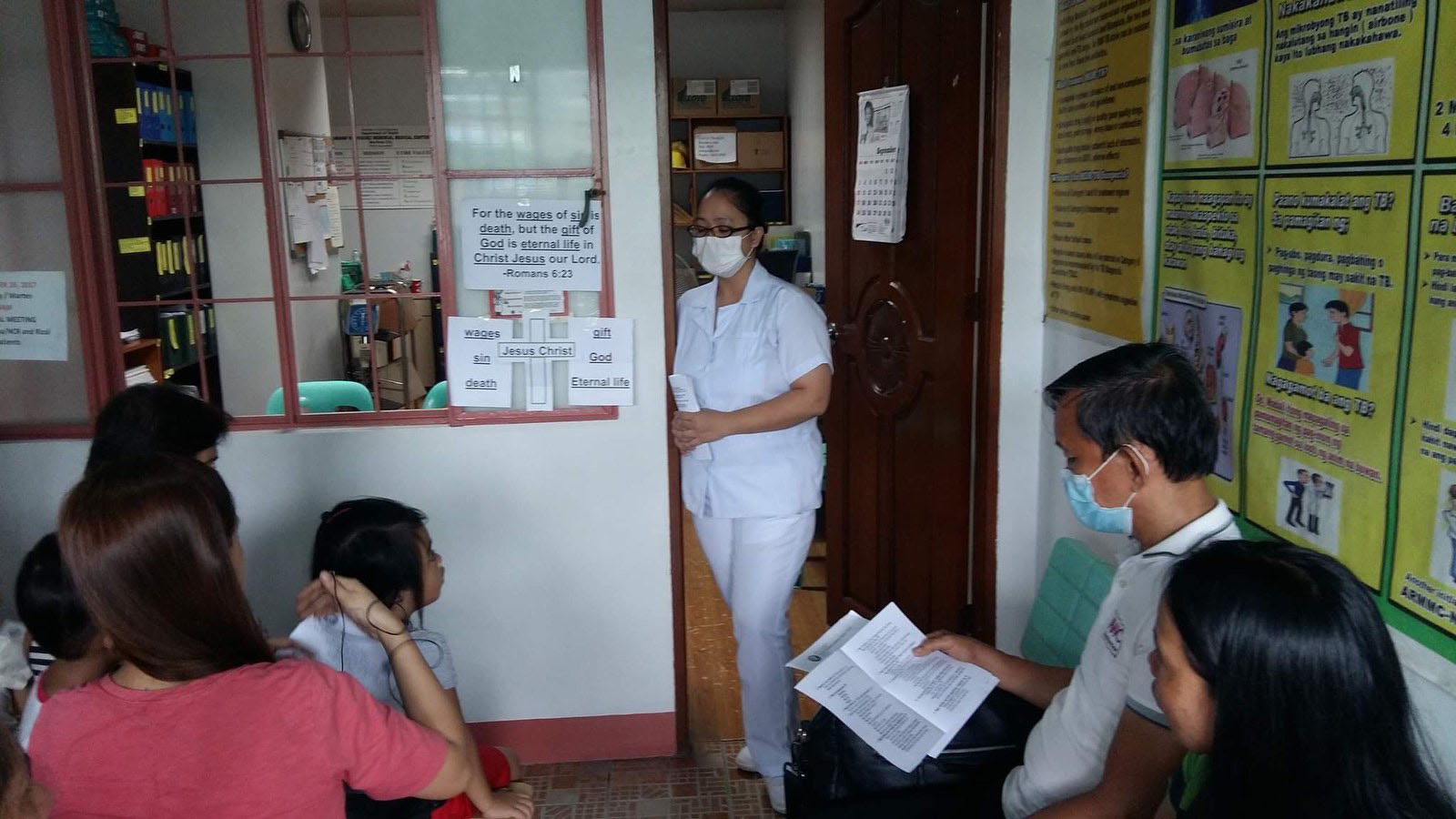As both a health worker and a COVID-19 survivor, nurse Joana Marie Pomasin Secolles, 31, knows all too well the full risk of being at the front line of the pandemic.
Joana is a staff nurse at the TB DOTS clinic of Amang Rodriguez Memorial Medical Center in Marikina City. DOTS refers to “Delivery of TB Services,” a term used to describe a health facility that provides a wide array of TB services.

“It was challenging at first,” describes Joana when she first decided to undergo specialized training under the TB program.
For the past three years, Joana has treated all kinds of patients—from newborns with mild cases of TB to adults with extreme extra-pulmonary cases, where the sickness has spread to other parts of the body. But for Joana, who initially took nursing out of her parents’ own personal wishes, helping patient after patient fully recover has now become her pride.
Her journey as a health worker was by no means the conventional story. After graduating with a nursing degree, Joana decided to shift gears and find work in the corporate industry. But after spending seven years in a white-collar job that left her unfulfilled, she finally decided to use her education into practice.
“Witnessing the patients at their weakest state, then little by little seeing improvements with their health until finally bidding them goodbye because they have completed the treatment regimen is the best part of working as a TB DOTS nurse.”
Daily grind
Joana and her colleagues mostly attend to TB patients from the marginalized sector. Their weekly schedule at the hospital has become a familiar routine. In the morning, they would follow a strict schedule of administering medication to their patients, enrolling new cases, and doing consultations in between. During the afternoon, they would record patient findings and register new patients into their facility.

“Our clinic caters not only to Marikina patients, but to patients from nearby Rizal, San Mateo, Antipolo, Cainta, and Taytay,” she explains. “Usually, we refer these patients to health facilities or clinics located in their respective barangays. However, many patients have expressed fear of being discriminated against if they went to a local facility. Some facilities did not even have enough medical supplies. Thus, patients prefer to go to us for treatment and consultations, even if it means longer and farther travel for them.”
But when cases of COVID-19 drastically surged in the country back in mid-March, Joana and her team were challenged anew as their hospital was identified as a medical facility for COVID-19 patients.
The risk of contracting the virus warded off patients from going in for check-ups, making diagnosing TB cases far more challenging. Many of their TB patients also struggled to receive their medication due to the lockdown.
“I was terrified to go to work, especially since the COVID ward was located near the TB DOTS clinic,” recalls Joana. “Since Tuberculosis and COVID-19 share similar symptoms, I thought that COVID patients might be referred to us too, which puts us and our own patients at a higher risk of exposure to the virus. But despite the fear I felt, I thought of the bigger responsibility I had to my patients and their treatment, so I still continued to go to work.”
Positive for COVID-19
Regrettably, Joana’s greatest fears were realized when she tested positive to the virus after interacting with a COVID-19 positive patient.

“As a mother of a four-year-old, that was one of the most difficult things I had to go through,” recalls Joana, who was subjected to self-isolation for two weeks. “I wasn’t allowed to see my child and husband. And I intentionally did not inform the rest of my family because I did not want them to worry.”
“I wasn’t allowed to go to work and the clinic had to close for a week because every staff had to be put under quarantine,” she adds. “Luckily, I only suffered a mild case, and by the grace of God, my husband and daughter did not acquire the disease.”
Despite the sudden closure of their clinic, Joana prides her team’s foresight of providing their patients and their hospital’s medical ward with a month’s supply of medication to ensure continuous treatment.
Test of resilience
“Those times really tested our resiliency as healthcare providers. Considering we could not operate in the clinic until we all tested negative, we decided to give medications to the wards for admitted patients who needed to immediately start on their TB treatment. We had the ward staff properly document each procedure and then required them to transfer the patients to the clinic once we could reopen,” explains Joana.
Fortunately, all of Joana’s staff mates tested negative to the virus and were able to resume clinic operations after a week. By May 11, 2020, Joana was able to go home to her family and resume her own responsibilities at the hospital.
Now, Joana and her team continue to treat patients in their facility while doing weekly check-ups through calls to ensure that their patients who are recuperating in their homes are taking the needed medication. As for finding new cases, they are working with their hospital ward staff to refer patients with possible TB cases. Joana further hopes that the current pandemic serves as a wake-up call to improve TB DOTS and other health services in all barangay levels to make treatment more accessible and available.
Despite the current focus on COVID-19, Joana firmly believes that majority of Filipinos still need to be made aware of other existing health risks, such as tuberculosis.
“I think a lot of people are not aware that TB also highly contributes to the deaths in our country,” she emphasized. “In fact, TB is not as easily detected compared to COVID-19, especially as symptoms of TB gradually build up. But I believe there’s room to give both illnesses equal importance and awareness.”
“The more we inform people of the risks, the more we encourage them to get themselves tested and invest in healthier lifestyle habits,” she adds. “It starts by informing them at a barangay level and then making services more accessible.”
In the case of TB healthcare systems in the country, hospitals and medical facilities are offering free GeneXpert MTB/RIF testing and X-ray services that can be available for free through social services. Patients who are registered can also avail of free blood diagnostic tests to detect any early signs of tuberculosis.
“Hopefully after this pandemic, we get to see improved medical facilities, especially more fully functional DOTS facilities in the rural areas,” concludes Joana.





















